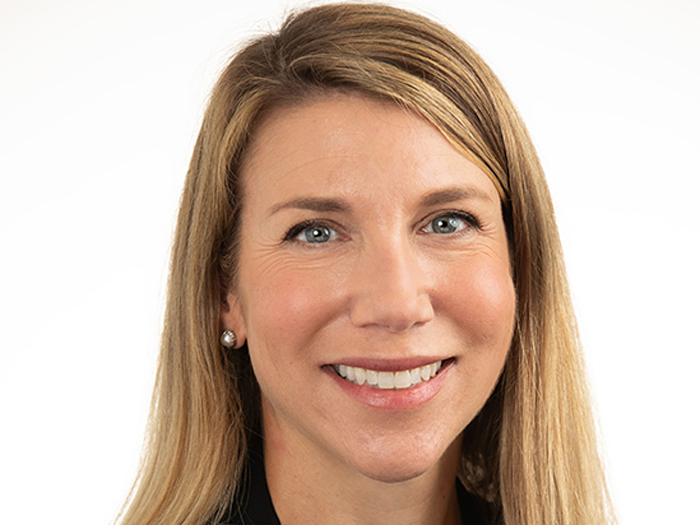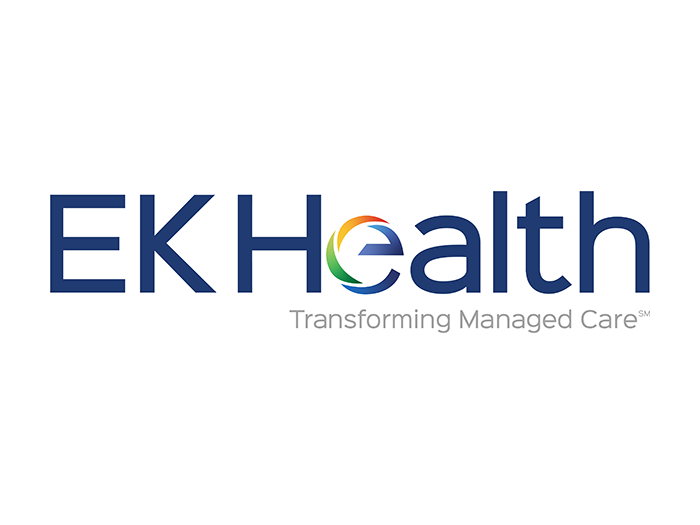Sponsored Content by ACE Group
11 Critical Risks Facing the Healthcare Industry

From pandemics to violence in hospitals, alarm fatigue to healthcare-acquired infections, healthcare organizations will be put to the test in the coming months and years.
Added pressure from new regulatory requirements under the Affordable Care Act makes the future even more challenging.
 When you factor in the daily demands healthcare organizations face in their quest to provide quality patient care, it’s clear that there are many hurdles that can disrupt facility operations and put employee and patient safety at risk.
When you factor in the daily demands healthcare organizations face in their quest to provide quality patient care, it’s clear that there are many hurdles that can disrupt facility operations and put employee and patient safety at risk.
”Today’s healthcare landscape is arguably the most difficult ever,” said Diane Doherty, Vice President, ACE Medical Risk Group. “If not managed properly, these critical issues can cause other unwanted outcomes such as an increase in medical malpractice and workers’ comp claims, government fines and penalties, and may negatively impact the organization’s brand and reputation.”
The following are some of the top critical issues facing hospital leadership.
1) Cyber Risk
 The healthcare industry’s move to electronic healthcare records has created new patient privacy exposures as records are more easily accessed by consultants, vendors and other third parties for efficient operation, and targeted by cyber criminals. Additionally, healthcare organizations face exposure to cyber risks that could have significant impacts on their operations, including shutting down critical, health-related systems.
The healthcare industry’s move to electronic healthcare records has created new patient privacy exposures as records are more easily accessed by consultants, vendors and other third parties for efficient operation, and targeted by cyber criminals. Additionally, healthcare organizations face exposure to cyber risks that could have significant impacts on their operations, including shutting down critical, health-related systems.
For more great articles, join our newsletter today: The Daily List from Risk & Insurance®
Data breaches and network disruptions can jeopardize an organization’s financial stability, security and reputation. Standard general liability policies often do not adequately cover perils associated with cyber and technology related exposures. Cyber liability insurance can address coverage gaps while also enabling companies to transfer risks associated with cyber, such as patient privacy and notification, crisis management, and forensic analysis expenses as well as certain regulatory fines, indemnity payments and legal costs.
“Cyber hacks and data breaches are a major issue facing the healthcare industry today,” said Renee Carino, Vice President and Chief Underwriting Officer, ACE Medical Risk Group. “It’s important now more than ever, that healthcare organizations work closely with their insurance carrier to assess this exposure and develop effective risk management strategies and ensure the proper coverage is in place.”
”Today’s healthcare landscape is arguably the most difficult ever. If not managed properly, these critical issues can cause other unwanted outcomes such as an increase in medical malpractice … and may negatively impact the organization’s brand and reputation.”
— Diane Doherty, Vice President, ACE Medical Risk Group
2) Healthcare Infections
 Healthcare-acquired infections (HAIs) cost the U.S. healthcare system billions of dollars each year and lead to the loss of tens of thousands of lives. At any given time, about 1 in 25 hospital patients has at least one such infection, according to the Centers for Disease Control and Prevention. Healthcare-acquired infections also come with a financial price, costing up to $9.8 billion a year, according to research published in 2013 in JAMA Internal Medicine.
Healthcare-acquired infections (HAIs) cost the U.S. healthcare system billions of dollars each year and lead to the loss of tens of thousands of lives. At any given time, about 1 in 25 hospital patients has at least one such infection, according to the Centers for Disease Control and Prevention. Healthcare-acquired infections also come with a financial price, costing up to $9.8 billion a year, according to research published in 2013 in JAMA Internal Medicine.
Among many solutions, healthcare organizations should ensure all sanitation systems are up to date, operational and ensure that staff understands how to properly use the systems to keep patients safe. They also should continue to remind staff and visitors about basic infection control techniques.
“Basic infection control techniques should be at the forefront of the risk management process,” said Doherty. “For example, it’s critical that medical personnel must wash their hands with antiseptic soap and water every time they treat patients to help reduce the spread of infections.”
3) Telemedicine
 Advances in technology, the current physician shortage and the dramatic increase in the number of patients seeking care under the Affordable Care Act have led a growing number of healthcare facilities to expand their use of telemedicine to deliver services to patients in hospitals as well as in remote locations. Over half of all U.S. hospitals now use some form of telemedicine to treat patients.
Advances in technology, the current physician shortage and the dramatic increase in the number of patients seeking care under the Affordable Care Act have led a growing number of healthcare facilities to expand their use of telemedicine to deliver services to patients in hospitals as well as in remote locations. Over half of all U.S. hospitals now use some form of telemedicine to treat patients.
Telemedicine may also result in allegations of negligence if healthcare providers do not have the proper training, experience and credentials. Currently, there is no federal standard of clinical guidelines for telemedicine.
In developing strategies to mitigate this risk, a few key processes and areas that should be examined include credentialing and peer review, medical staff by-laws and of course, CMS guidelines.
“It’s important now more than ever, that healthcare organizations work closely with their insurance carrier to assess this exposure and develop effective risk management strategies and ensure the proper coverage is in place.”
— Renee Carino, Vice President and Chief Underwriting Officer, ACE Medical Risk Group
4) Violent Incidents in Hospitals
 Hospitals may be places of healing, but they also have become the scene of an increasing number of violent incidents. Such incidents not only put patients at risk but also medical professionals, who are often the targets of attacks, harassment, intimidation and other disruptive behavior.
Hospitals may be places of healing, but they also have become the scene of an increasing number of violent incidents. Such incidents not only put patients at risk but also medical professionals, who are often the targets of attacks, harassment, intimidation and other disruptive behavior.
The incidence rate for violence and other injuries in the healthcare and social assistance sector in 2012 was over three times greater than the rate for all private industries. The Joint Commission, meanwhile, reports increasing rates of assault, rape and homicide in healthcare facilities. Perpetrators can include patients, family members, visitors and vendors as well as current and former healthcare employees.
Hospitals and healthcare organizations should enact a zero-tolerance policy, one that states that no form of violence — physical, verbal or psychological — will be tolerated, and that all offenders will be subject to disciplinary action, including termination.
“Healthcare organizations should develop a comprehensive violence prevention program that is specific to their organization and analyzes potential safety hazards and implements strategies to prevent them,” Carino said.
5) Alarm Fatigue
 Hospital nurses hear them constantly — the beeps and chirps of alarms on medical devices, such as ventilators, cardiac monitors and pulse oximetry devices. While alarms are designed to draw attention to a potential problem, they can easily be tuned out by overwhelmed medical professionals, who may then fail to respond as they should.
Hospital nurses hear them constantly — the beeps and chirps of alarms on medical devices, such as ventilators, cardiac monitors and pulse oximetry devices. While alarms are designed to draw attention to a potential problem, they can easily be tuned out by overwhelmed medical professionals, who may then fail to respond as they should.
Alarm fatigue is a growing problem for hospitals and the consequences can be fatal. The Joint Commission’s Sentinel Event database includes reports of 98 alarm-related events between January 2009 and June 2012. Of the 98 events, 80 resulted in death, 13 in permanent loss of function and five in unexpected additional care or extended stay. Alarm fatigue was rated a top concern by 19 out of every 20 hospitals in the United States, according to a national survey presented at the annual meeting of the Society for Technology in Anesthesia in 2014.
To reduce the risk of patient harm from alarm fatigue, the Joint Commission, along with the Association for the Advancement of Medical Instrumentation and the ECRI Institute, offered a list of precautions, including ensuring that there is an effective process in place for safe alarm management and response in high-risk areas.
Additional Risks
6) Preparedness for Pandemics
7) Healthcare Reform/Physician Integration
8) Disruptive Staff Behavior
9) Environmental Pollutants
10) Emergency Preparedness
11) Obesity Epidemic
Please download the whitepaper, “Critical Risks Facing the Healthcare Industry” to learn more about the additional risks listed above. The paper also provides a deeper perspective on the risks covered in this article as well as additional risk management recommendations.
![]()
![]() This article was produced by the R&I Brand Studio, a unit of the advertising department of Risk & Insurance, in collaboration with ACE Group. The editorial staff of Risk & Insurance had no role in its preparation.
This article was produced by the R&I Brand Studio, a unit of the advertising department of Risk & Insurance, in collaboration with ACE Group. The editorial staff of Risk & Insurance had no role in its preparation.











